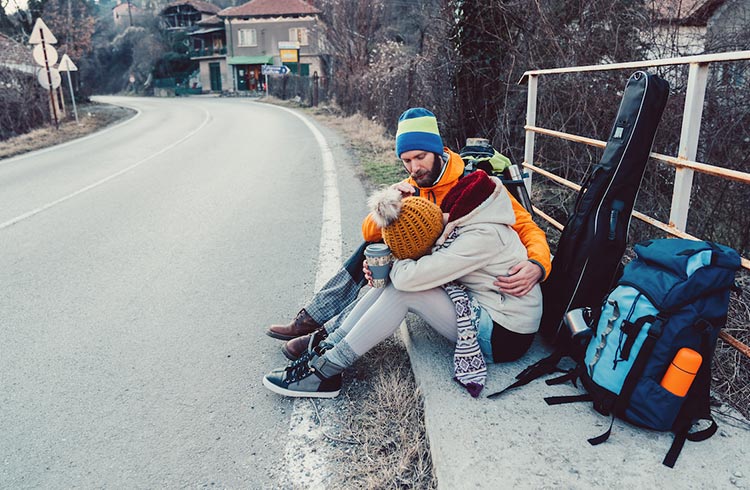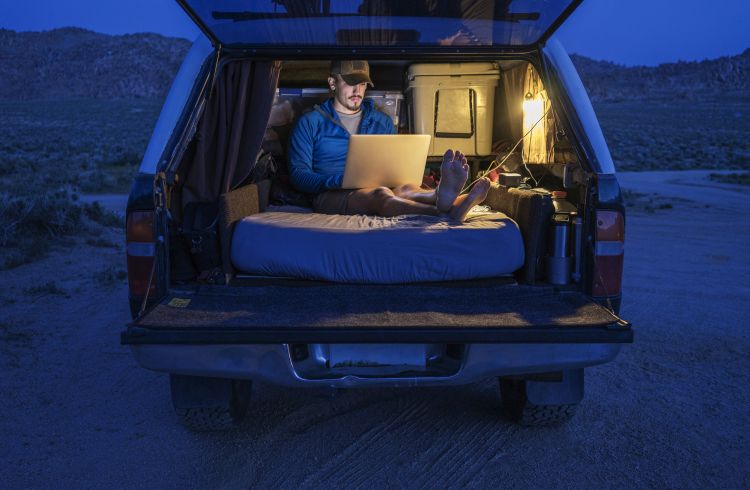Keep in touch with your friends and family while you travel the world. Here are a few simple ways to check in while you're on the road.
 Photo © Getty Images/martin-dm
Photo © Getty Images/martin-dm
A lot of travelers don't give much thought to their loved ones back home, but staying in touch is a vital component of traveling safely, especially for solo travelers. What would give you peace of mind, but also what do your folks at home expect?
Put together a plan for staying connected with your friends and family, that way they know where you are and can raise the alarm if you don't turn up as expected.
Here are seven ways to keep in touch:
- Leave Your Contact Details With Loved Ones
- Stay Connected With Emails
- Send Text Messages
- Set up a Blog to Keep Everyone Up to Date
- Stay Connected via Social Media
- Register With Your Department of Foreign Affairs Before You Depart
- Keep a Copy of Important Documents and Contact Details
Leave Your Contact Details With Loved Ones
Leave a copy of your itinerary with the folks at home, including details of where and when they can contact you. This works well if you’re the kind of person who plans out every detail of your trip in advance or goes on an organized tour. But, if you roam wherever your bank account and desire takes you next, leave as many details as you can.
Stay Connected With Emails
For those old enough to remember snail mail, keeping in touch on your big trip meant buying a postcard once a month and dutifully mailing it back home. It gave family a sense of how much fun you were having but was totally out of date by the time it arrived. Nowadays, you'd be mad not to use email for that purpose. It's easy to drop someone a short note, it arrives instantly and doesn't cost a cent if you use free Wi-Fi when it's available.
Most people now stay connected via social media, but if your grandparents are hoping to hear from you every once in a while, sending them an email is a nice thing to do.
Send Text Messages
International roaming charges can be huge, but if you have a WhatsApp account (used extensively across South America and parts of Europe), you can send text messages for free via Wi-Fi. When traveling through countries like China, where access to everyday applications and websites you use back home is prohibited, consider buying a local sim card and pre-paid credit from local providers.
If you're planning to go off-grid, send a quick text message to someone back home outlining your plan, and let them know that you'll be in touch when you're back safely. Always remember to send that second text so you don't set alarm bells ringing.
Set up a Blog to Keep Everyone Up to Date
Setting up your own travel blog has many benefits:
- You can write about your adventures in depth without posting every day on social media
- You can bring your trip to life through photos, lengthy stories and videos, and organize the information through tags
- It's a great way to keep a record of your travels to read when you get home
- Your friends and family can interact with you via comments on your blog
- Most website host providers and blogging platforms will give you control over the copyright of your work. This isn't always the case on social network sites and is worth looking into before you hand over your precious memories
- Plus, you can make money while traveling.
Stay Connected via Social Media
Even if all you can manage is to regularly post a brief status update (the kind your desk-bound mates at home will wince at), at least it's a form of letting people know where you are – and how much of a great time you're having.
The only downfall of using social media is that it's not personal, and rarely goes into much depth. Make an effort to contact your loved ones with something more personal every once in a while – even if it is via Facebook Messenger.
Register With Your Department of Foreign Affairs Before You Depart
You may also be able to register with the Department of Foreign Affairs (or equivalent) in your country of residence. This shouldn’t usurp your other efforts to stay in touch, but can greatly help with contacting you in an emergency. If you're going to be in the same country for a while, it's also a good idea to register your whereabouts with your country's consulate or embassy in that country.
Remember to alert your bank of the countries you will be traveling to, otherwise you might find your cards are frozen while you are overseas. Usually, you can fill out a form online before traveling.
Keep a Copy of Important Documents and Contact Details
Keep these contact details and documents in your luggage, or atleast online somewhere you can access them while traveling:
- Your passport and visa details: travel with photocopies of the personal information page/s of your passport as well as photocopies of any visas. Take a couple of spare passport photos and an alternative photo ID
- Print out the contact details and policy information (PDS) of your travel insurance provider
- Carry a print out of the contact details of your country's consulate in the countries you are visiting
- Keep the contact details handy for your bank/credit card/debit card to cancel it if necessary
- Health care provider details, such as your regular doctor or pharmacist. This is important if you are traveling with medication or required injections for your trip
- Details of your next of kin or the people to contact in an emergency.
Leave a hard copy of these at home with a friend or relative in case of an emergency, where they might not be able to get in contact with you, but will require your details.
Send a copy of these files to yourself via email so you have them electronically – just in case you lose your luggage that contains all of these important documents.
Related articles
Simple and flexible travel insurance
You can buy at home or while traveling, and claim online from anywhere in the world. With 150+ adventure activities covered and 24/7 emergency assistance.
Get a quote


No Comments